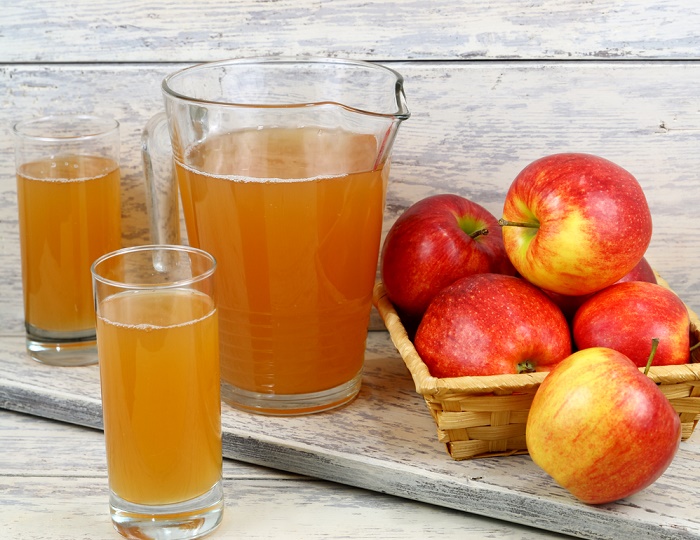Drinking a glass of apple juice helps prevent the formation of cholesterol in the blood vessels and arteries. This helps reduce the risk of developing two main causes of heart disease: high cholesterol and plaques in the arteries. But in addition, apples contain great benefits for health in general.

Perhaps the biggest benefit of making apple juice at home is the taste of ripe, freshly squeezed fruit. However, the wholesomeness of the product is one of the main interests of devotees of homemade juice. When fresh unpeeled apple juice is made, filtered or lightly filtered apple juice contains fiber-rich pulp that can help improve body functions. Additionally, cooks who juice home grown apples can sidestep concerns about arsenic in their fruit.
How to make your own apple juice?
The preparation of an apple juice is not supposed to be a problem, however there are some steps that will make your juice taste ideal.
Step one
Get the apples of your choice and then wash them thoroughly.
Step two
Cut off. There is no need to peel or discard the core to the apples – there is a ton of flavor and juice that can be extracted from this as well and will need to be removed later. Discard the stained pieces of the apple. Cut the apples either in half or using an apple cutter (as in the photo above). This step helps break the apples faster while they cook.
Step three
To cook. Place all the apples in a large pot or pot and add about 2 inches of water. Cover the pot and cook over medium-high heat until the apples break open and become soft. A low heat helps to extract the juices more efficiently. Occasionally remove the lid and mash with a potato masher to help the apples fall apart.
Step four
Pour the applesauce into a bowl. Using a spatula, work the puree through the strainer to get as much juice as possible. You will get three different end products: Apple juice, applesauce, and peels. Do not throw away the puree or the peels. The puree can be seasoned into applesauce or a delicious homemade dressing and the peels can be used to make apple jelly.
Step five
Filter. When all its juice is obtained it can be filtered to produce a clear liquid. There are several ways to filter the juice, but you can do this by creating a fine mesh strainer with a few coffee filters inside. You can filter its juice as many times as you want. We prefer more “meaty” juice, unfiltered, so we skip this step.
Step six
Adjusting its sweetness. Transfer the juice to a clean pot and cook over low heat. Now is the time to savor its juice. How is the sweetness? If it is too acidic, add natural sweetener to taste and beat until dissolved. Otherwise leave it without sugar.
Step seven
Preserving It: There are two tried and true methods of preserving your homemade juice: freezing or canning. If you freeze it, simply let the liquid cool and store in airtight containers. Use within 3-6 months for best flavor. Another way is to pour the hot apple juice into special sterilized jars to be packed in a water bath. For that, pour leaving 1/2 inch of space before reaching the top. Cover and process in a pot with hot water for 30 minutes.
Although there are more effective ways to make apple juice and maintain more of its nutrients than this methodology, the taste of fresh homemade juice cannot be compared with that bought in the supermarket, which in addition to being not fresh, contains preservatives and sweeteners very harmful to health. Enjoy it!
More benefits of apple
Apples are among the healthiest fruits. Without cholesterol, extremely low levels of saturated fat and sodium, and with the ability to boost the levels of vitamins, minerals and antioxidants in our body.
Apples are produced in abundance each fall, with most of the fruit rotting on the ground or being taken to the municipal landfill. It is a crime to waste so much nutritious fruit, which is why many times the preparation of apple juice helps us to prevent the fruit from spoiling without being able to use it.
